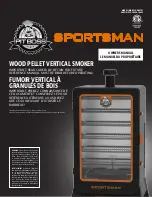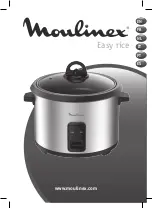
10
Using the Ceramic Hob
WARNING: DO NOT USE THE HOB IF IT IS CRACKED. TO AVOID ELECTRIC SHOCK - SWITCH OFF AT
THE COOKER MAINS CONTROL SWITCH IMMEDIATELY AND CONTACT YOUR NEAREST SERVICE
OFFICE (see KEY CONTACTS, back page).
Ratings of Cooking Zones
Front Left
Front Right
Back Left
Back Right
C eramic
1200 W
145mm diameter
Ceramic
1700 W
180mm diameter
C eramic
1700 W
180mm diameter
Ceramic
1200 W
145mm diameter
The Working of the Heating Zones
Heating only occurs within the marked circular
cooking zones. The zones heat up and cool down
quicker, providing greater controllability for sensitive
foods. Each heating zone is equipped with a thermal
limiter which is a safety cut-out which prevents the
ceramic glass from overheating. After several
minutes at full power without a pan on the heating
zone the thermal limiter will switch the heating
elements off and on automatically to avoid any
damage to the ceramic glass.
The active hotplate pilot light
A short time (approx. 30 seconds) after the hob
heating areas have been turned on, the Hob Hot
neon will illuminate.
This light will remain illuminated until all the hob
controls have been turned off and all hob heating
areas have cooled.
The HOT HOB indicator light:
This indicates that the temperature of the
corresponding cooking zone is greater than 60°C,
even when the heating element has been switched
off but is still hot.
Choice of saucepans
It is essential that the saucepan's you use on the
ceramic hob are suitable.
ALWAYS USE:
•
Good quality pans with smooth, flat, heavy
bases.
•
saucepan's manufactured from aluminium
(enamelled or machined) or stainless steel.
•
Correct size saucepan's. The base of the pan
must cover the heating zone completely.
•
saucepan's with lids which are well fitting to
reduce cooking time and energy use.
NEVER USE:
•
Pans with thin, distorted or uneven bases as
these will extend cooking times, waste electricity
and cause damaging, local hotspots on the
glass surface.
•
Pans with ridged or recessed bases.
•
Pans with damaged or rough bases which could
scratch the glass surface.
•
Glass or glass ceramic utensils.
Do Not
In order to keep your ceramic hob in good
condition, follow these simple
guidelines:
Do not
Do not
Do not
Do not
Do not cook directly on the hob surface without a
cooking utensil, as this will result in damage
to the surface of the hob.
Do not
Do not
Do not
Do not
Do not use the hob as a worktop surface as
damage may occur to the smooth surface of
the hob.
Do not
Do not
Do not
Do not
Do not drag or slide utensils on the hob surface, as
this will cause scratches in the surface of the
hob.
Do not
Do not
Do not
Do not
Do not allow a cooking utensil to come into contact
with the hob surround.
Do not
Do not
Do not
Do not
Do not place anything between the base of
the utensil and the ceramic hob,
e.g. do not use asbestos mats,
aluminium or wok stand.
Do not
Do not
Do not
Do not
Do not leave any utensils, food or combustible
items on the hob when it is not in use.
Do not
Do not
Do not
Do not
Do not place aluminium or plastic foil, or plastic
containers on the hob.
Do not
Do not
Do not
Do not
Do not leave the hotplates or cooking areas
switched On unless they are being used.
Do not
Do not
Do not
Do not
Do not leave heating zones uncovered when they
are switched On. We recommend not to
place large preserving pans or fish kettles
across two heating areas.
EN
EN










































